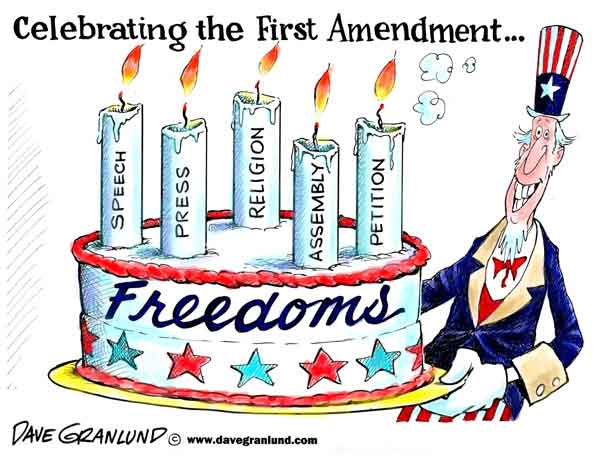Today, I want to take a brief journey into one of the American freedoms we have based on the First Amendment – the right to assemble- and how that freedom has been and is continuing to be expressed in our country.
Before we dive into the actuality of a protest, let’s look at and understand the language of the First Amendment in the Bill of Rights as it applies to this topic.

Right
What does “right” mean here? While I have a sense of this based on my own education, I did an internet search to see what came up. After perusing several different definitions, I think this one at dictionary.law.com sums it up best by defining right as “rights given or reserved to the people by the U.S. Constitution, and in particular the Bill of Rights. To restate, a right is something that a person has which is guaranteed by the laws of the land.
People
This leads us to the very real question, who are the people? One obvious answer is citizens of the country. I don’t that can be argued. But are those the only people who have rights? Well, no. But what rights to non-citizens have? Websites with this information abound, and it can be quite confusing for they quote the law to make their case. The biggest point of contention seems to be whether “illegal” or “undocumented” people are protected under the Bill of Rights. From what I can tell, the general consensus is that every person living in the USA is covered under the Bill of Rights, but I am sure this will repeatedly be tested in the court of law in the upcoming years.
Peaceably
What does peaceably mean? Most of us have a definition of peace, but how does it apply here? We have all see the recent protests where people march in mass, waving signs and shouting. Is that peaceful? We have also seen people blocking freeways. Can that be a peaceful protest? It is the definition of what is peaceful that can cause problems. If the government or city decides it is “not peaceful” than they can break up the assembly as we have seen on TV with pepper spray being sprayed on protesters. I was unable to find a clear, concrete definition of what is and isn’t peaceful and I think this is being debated and played out even today.
Assemble
Assemble is a verb that means to gather, and the noun assembly is the gathering together of something, often people. Technically, a birthday party for your mom is an assembly. An assembly can be in a private home or a public area like a park or sidewalk. The more people involved, the bigger the assembly. In today’s language, we generally use the noun “protest” rather than assembly. Often times, these assemblies are organized into a March, where people gather and walk to a particular place or on a particular route, rather like a parade of protest.
Petition
To petition is a verb that means to ask. When you see the signs in a protest, these could be considered petitions. They are expressing the requests or demands of the people. Here also, we often use the verb “protest” rather than petition. Regarding language usage, one petitions or asks for something but protests or fights against something.
Redress
Redress is a verb that means to remedy or fix something. So if you cut me off in traffic, causing me to have an accident, you might redress the situation by paying for my car repairs. In the case of the First Amendment, it is the government that is being asked to fix a situation.
Grievance
Grievance is if a formal noun that means a wrong or damage that generates complaint or protest. You have a grievance or complaint against something or someone.
Restating the First Amendment in simpler language gives us:
a guarantee that people in the United States can come together in numbers great or small and demand their issues be heard and addressed by the government.

In 2016, the Black Lives Matter movement and protests occurred all over the United States. People of all races are asking the government to end police violence against African Americans. This movement continues today.
On January 21, there was a Women’s March on Washington and other cities around the country. People were protesting for the protection of rights, safety, health, family, and diversity. People were and will continue to protest some of the statements and pomissed policies of the newly elected President Trump.

In the United States, the people have the protected right to express their feelings in public and to stand against situations they feel are wrong. The First Amendment guarantees that right. If you would like more information on what these rights are and the practical application of them, I found this informative Know Your Rights Faq sheet published by the ACLU.
